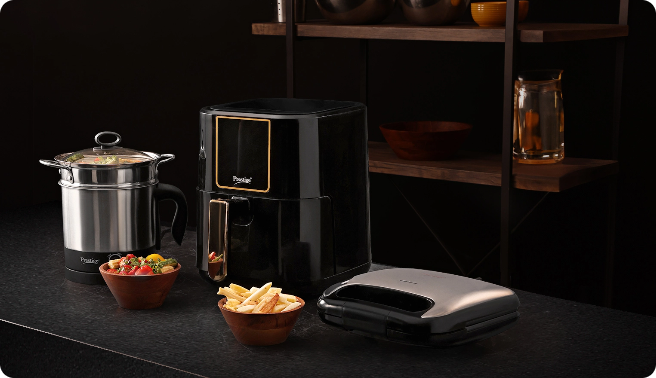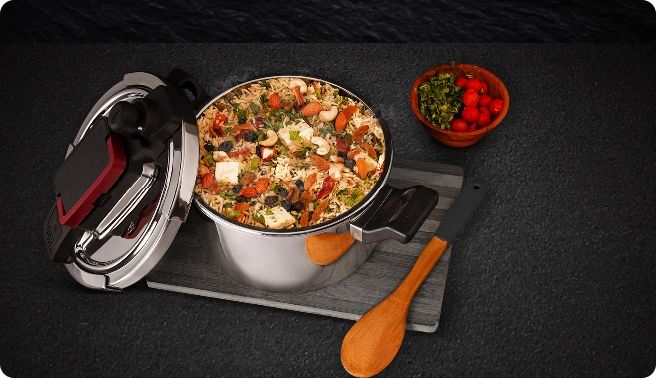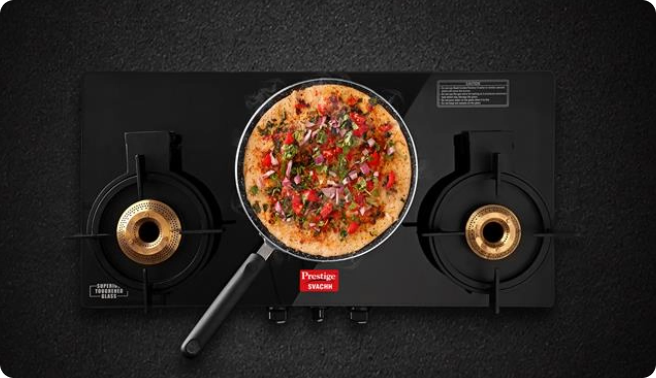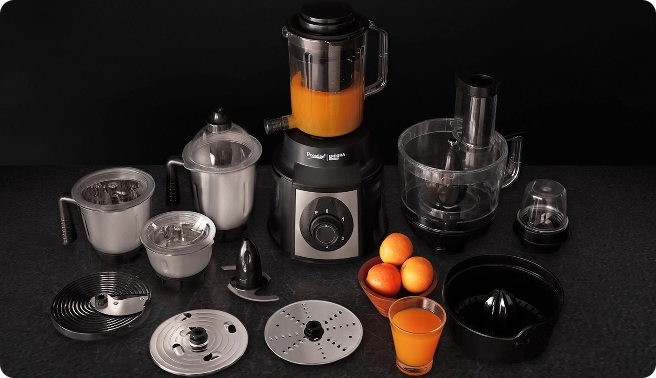Introduction: Roti Maker Misconceptions Dispelled
Gone are the days when we had to spend hours in the kitchen to prepare delicious and healthy meals. Modern and fancy appliances are making cooking more accessible and efficient for everyone. One such kitchen appliance gaining extreme popularity in Indian households these days is a chapati maker. This appliance is well-known for its extreme usefulness
Have you ever had second thoughts before buying a chapati maker because people told you different stories? If yes, here’s everything you need to know about chapati makers.
This appliance is here to make our time in the kitchen easy. Yet, you may need some clarification when it comes to health and safety concerns. This is precisely what we will be discussing in this blog. From the fear of cancer to unhealthy roti-making processes, we will debunk some of the most common myths about roti makers.
10 Roti Make Myths Explained
Let’s discuss these myths individually, separating fact from fiction.
Myth 1: Roti Makers Can Cause Cancer
There is no scientific proof that a roti maker machine can cause cancer in any capacity. Many people believe so because of the mechanism that this appliance uses.
People believe that roti makers radiate high levels of Electromagnetic Fields (EMFs) because they use electricity. And this causes cancer in anyone eating these rotis. However, EMFs emitted by roti makers are considered safe for daily use by international standards.
You should also know that any cancer-causing substances that develop in food are generally the result of burning or over-roasting. Modern roti makers are designed to avoid such overheating.
Myth 2: Non-Stick Coatings are Toxic
Many people believe that non-stick coatings in roti makers and other kitchen appliances are toxic. This is why some people refrain from investing in non-stick pans and woks. They believe roti makers are made of the Teflon (PTFE) non-stick coating.This material is believed to release cancer-causing toxins when exposed to heat. However, it was banned in 2013, and today’s chapati makers don’t use this material.
If anything, non-stick coatings make cooking and cleaning easier. Moreover, current non-stick technologies are safe for cooking.
These non-stick coatings do not release any toxic chemicals within the recommended temperature ranges (below 260°C or 500°F). And roti makers are designed to avoid reaching such high temperatures. Hence, if you plan to invest in a chapati maker for home, you can go ahead without worrying about the toxicity.
Myth 3: Roti Makers Get Rid of Nutrients
Any food loses its nutrient value when exposed to heat. This is true for a roti maker as well. But when compared to making rotis manually, rotis made using a roti maker retain more nutrients, making it a healthier choice.
The cooking process in a roti maker machine involves less heat. This appliance also works under controlled temperatures. This makes the process quicker, holding more nutrients. Some nutrients even stay intact in a roti maker.
In a traditional cooking process, you would expose your roti to heat for a longer time, losing more vitamins and minerals.
Myth 4: Digestive Issues Due to Excessive Use
When it comes to roti makers, this is one of the most absurd myths people believe in. This myth can make you wonder- is roti maker good for health? And here’s the answer for you- yes.
It is more about how frequently and how many rotis you consume rather than the use of the roti maker itself. You could get the best roti maker machine at home, but you would face digestive issues. Since there is a difference in texture between hand-rolled and machine-made rotis, people may believe this leads to digestive problems.
However, a machine-made roti is as healthy as a hand-made roti. It may cause digestive issues if you are eating a specific type of roti. Hydration of the body and diet patterns also play a crucial role.
Myth 5: Roti Makers are Not Hygienic
Most people hesitate to buy a roti maker, thinking it’s difficult to clean. You may be wondering which roti maker is good for you regarding hygiene. If you know how to keep a roti maker clean, any brand or type will work for you.
Proper care is the key to making sure that your roti maker remains as clean as any other kitchen appliance. Additionally, modern designs used for roti makers provide easy cleaning. The material used for their parts also makes them dishwasher-safe.
Myth 6: The Only Healthy Option is Gluten-Free Rotis
A gluten-free chapati is essential and non-negotiable for people with celiac disease or gluten sensitivity. However, they are not inherently the healthiest for everyone. What type of roti will suit you depends on the ingredients used, your body’s nutritional needs, and your overall diet context.
If you are gluten-sensitive, gluten-free rotis are for you, and can be made with a roti maker. All you need to do is change your flour to an appropriate one like coconut flour, almond flour, etc. For those who are not gluten-sensitive, you don’t need to stick to gluten-free rotis.
Whole wheat rotis remain a nutritious option for everyone. You can experiment and try exploring what works best for your body.
Myth 7: Roti Makers Increase Risk of Diabetes
Some believe that rotis made in a roti maker are more likely to increase blood sugar levels. This is another myth that is just based on assumptions. The fact is, the glycemic index of a roti is determined by the type of flour used and not the cooking method. Choose whole grains over refined ones to manage your blood sugar levels, regardless of how the roti is prepared.
If you notice your sugar levels increasing, pay attention to your overall diet and your physical activity. Additionally, controlling the amount of chapatis you consume at a time may be helpful if you prediabetic.
Myth 8: It’s Healthier to Roll by Hand
Hand-rolling rotis is a traditional skill that many people find therapeutic and satisfying. It helps you add your personal touch regarding the thickness and size of a chapati. However, this is all possible only when you are skilled at rolling chapatis perfectly. Moreover, hand-rolled rotis might have variable thickness, which could affect cooking time and the texture of the chapati.
When it comes to health, both the traditional and the modern ways don’t affect the nutrient value or health benefits of a chapati. In fact, manually rolling a chapati consumes more time and energy and requires skills. A roti maker makes the whole process easier and quicker.
Myth 9: Roti Makers Emit Harmful Radiation
This is another myth that people believe without any scientific proof. Appliances like roti makers emit Electromagnetic Fields (EMFs) but these emissions are not intense. Moreover, legal regulations bind manufacturers to design roti makers that meet safety guidelines. This ensures that any EMF emission is below harmful levels and safe.
For those who believe that roti makers emit harmful radiations- the EMF exposure from using a roti maker is significantly lower than what you might face from prolonged use of other devices, like smartphones or laptops.
Myth 10: Roti Makers Work Against Special Diets
The only way to determine whether a roti works against or supports your particular diet is by analyzing the ingredients used in making it. Whether you are following a low-carb, high-protein, or gluten-free diet, roti makers can still be a valuable tool.
This fantastic appliance is developed to cater to any type of dough and make the best rotis. You can easily replace wheat flour with other diet-specific flours like chickpea, coconut, or almond flour and make your regular chapatis out of it. You can also get creative by adding your choice of veggies, spices, or other ingredients to your regular dough.
Conclusion: Informed Decisions to Help You Choose Healthier Roti-Making
In a world whole of misconceptions, myths, and rumors, you must stay informed more than ever. Roti makers have evolved the world of cooking technology. This appliance is designed to simplify our lives without compromising on health. By understanding the facts and baseless myths, you can embrace this fantastic appliance for convenience and efficiency.
Make healthy eating more accessible and fun with our range of Prestige roti makers. Explore our range of multi-purpose roti makers and experience a fun way of cooking perfect and healthy rotis daily.












